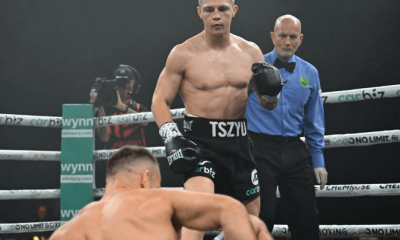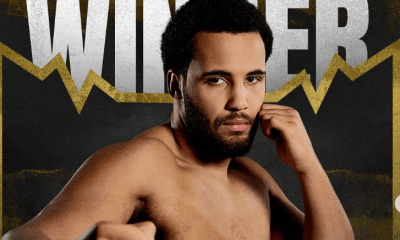Featured Articles
Filipino Boxing Profile: Ten Names to Know
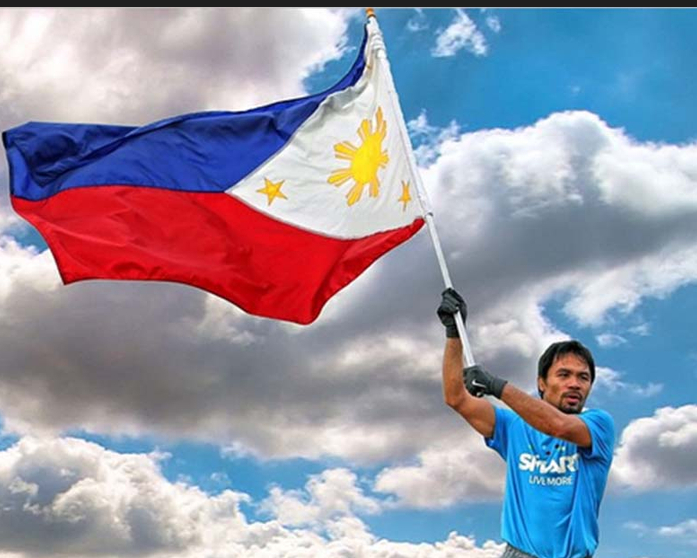
In the surge to crown the “New Manny Pacquiao” that did not even await the retirement of the old Manny Pacquiao, many different fighters have been lauded and discarded by the press, both western and Filipino. This rather misses the point. The reason a Mike Tyson or a Muhammad Ali or a Manny Pacquiao are so exciting isn’t that they inspire the next in line: it’s all the fighters that they inspire to try. These are the stories of the new generation of Filipino warriors and they are key to the sport. Boxing is an unfolding story, history at large, it needs journeyman, gatekeepers, title challengers and caretaker champions every bit as much as it needs all-time great sporting giants. More, even.
The Philippines is perfectly positioned to mesh with boxing behind the inspiration provided by a fistic legend. It has a large population, around a 120 million, it has a sad and bravely fought war with poverty, an estimated fifth of that population living in its clutches; and Filipino fighters from old-time flyweight champion Pancho Villa to the modern day seem both unafraid of hard work and filled with fighting heart.
Here then, we will look at the ten Filipino fighters whose names we should know right now.
Mark Magsayo, Aged 27, Featherweight, 24-2, Tagbilaran City, Bohol
Mark Magsayo is coming off back-to-back losses and it is a testimony to the vibrance of the featherweight division and to the stiff assignments Magsayo has undertaken that he has retained relevancy in a sport that is crueller now than ever before to the recently defeated.
Out-scrapped by cunning Rey Vargas in July of last year, Magsayo kept it close with a sneaky right-handed knockdown that sent the fight to a split decision on the official cards (115-112 Vargas on mine). He was never out of the contest although his chances on the cards were bolstered in the main by a fast start. He showed an even faster start earlier this month against Brandon Figueroa but allowed his opponent’s relentlessness to push him out of the contest, although two harsh points deducted for holding in an all-action fight that continued on the inside despite Magsayo’s grabbing for a spare arm seemed harsh.
I had Magsayo winning five of the first six rounds, and claiming three of the first five against Vargas. Magsayo, it seems, has a stamina issue when his workrate is pitted against that of an elite opponent. He has the guts to remain in the fight regardless of his fatigue but he doesn’t appear to have the type of tide-turning energy that can close a fight late. This is a problem for a fighter who has never knocked out a world class opponent, though his record against more limited opposition proves his dig.
But Magsayo will always be in closely contested, exciting fights. That is a testimony to his character and fortitude. He has probably been cast adrift for the moment from the divisional elite (Mauricio Lara, Brandon Figueroa, Rey Vargas and Luis Alberto Lopez) but he probably remains the best of the rest, at least until Robeisy Ramirez meets Isaac Dogboe at the beginning of April. Expect to see him out in lesser company next time around before making a possible call to his old friends at the WBO in an effort to break up the Lara/Leigh Wood/Josh Warrington lock-up of that strap.
John Riel Casimero, Aged 34, Super Bantamweight, 32-4, Ormoc City, Leyte
Nonito Donaire is the most famous of the post-Pacquiao Filipinos, but John Riel Casimero at one point was probably second. There is no greater enemy to a fighter than inactivity, whether fisticly or financially, and having boxed only two rounds in the last two years, Casimero has arguably made a victim of himself.
With all of that said, there is no reason the final years of Casimero’s career can’t be exciting and profitable, and it should be stressed that the two confusing rounds he boxed in 2022 were not entirely his responsibility. Reintroducing himself to the 122lb division he travelled to South Korea to meet Ryo Akaho. Upon being flashed while off balance by a check hook in the second, Casimero clearly lost his temper, illustrated by the wild, winging shots he launched while chasing Ryo around the ring. Many of these landed, but more than one of them strayed into rabbit-punch territory, and upon a called break used by the referee to remonstrate with Casimero about these clumsy punches, Ryo decided he could no longer continue. What was ruled a No Contest on the night was later changed to a KO2 victory for Casimero when the Korea boxing commission realised just bow bad that look was.
All’s well that ends well but it leaves Casimero rusty, probably past his prime and without a natural home for his 122lb ambitions. His name has been continuously linked with that of Naoya Inoue’s, and that is indeed the big payday at the poundage, but if he should be matched with the winner of Inoue and Stephen Fulton, Casimero wants to be at something approaching his best, not the fighter limited by inactivity we see currently. Luis Nery’s name has also been mentioned in dispatches but it is interesting that the perception would now be that Casimero is no longer a problem that Nery doesn’t need. Casimero has closed the gap on himself, for better or worse.
A schooled veteran with good power and quick feet, Casimero should remain a handful for anyone almost regardless, but speaking as a fan, I would like to see him out before the end of May and against a decent level of opposition. American Daniel Roman and the other 122lb Inoue brother, Takuma, both make all the sense in the world.
Marlon Tapales, Aged 30, Super Bantamweight, 36-3, Tubod, Lanao del Norte
Another natural fight for Casimero would be against the premier Filipino Super Bantamweight, Marlon Tapales, from the southern island province of Tubod. A damaging loss to Ryosuke Iwasa in 2019 was tempered by an eye injury caused by a clash of heads that clearly made it difficult for him, and when he came blasting back in 2021 with a two-round stoppage of Hiroaki Teshigawara he was right back in contention.
The three-piece that ended that fight was a thing of beauty and underlines just exactly how Tapales has improved this decade. He’s finding the third punch where before there was only two and a coolness under fire has helped him develop a real accuracy on the attack. This makes him a dangerous finisher – nobody has carried him further than two since that loss to Iwasa.
Truthfully though, Tapales remains something of an unknown quantity at thirty years of age. That is all about to change though as he is set to meet the undefeated Murodjon Akhmadaliev on April 8th in San Antonio. A shot at a strap on American soil has been a carefully cultivated strategy for Tapales, who has fought seven of his last eight in Carson, Los Angeles, Brooklyn and elsewhere in order to carve himself out a share of what remains boxing’s biggest pie. Fight fans should circle the date as these two sit bang in the middle of the 122lb rankings, exactly the type of fight that has delivered for fans in the rich first quarter of 2023.
Akhmadaliev will likely start as a favourite, not least because the victory that unlocked the top half of the world rankings to him was over the man who defeated Tapales in 2019, Ryosuke Iwasa. That fifth- round stoppage was controversial though and triangular analysis is among the least reliable in boxing – come April, we will know where Tapales sits, one way or the other.
Reymart Gaballo, Aged 26, Bantamweight, 25-1, Polomolok, Cotabato del Su
Reymart Gaballo got lucky against Emmanuel Rodriguez in December of 2021, handed a split decision victory in what looked like a clear loss (116-112 Rodriguez for me). I have never seen a card in favour of Gaballo for that fight other than that of judges John McKaie and Don Trella. It is perhaps a form of justice then that Gaballo finds himself hanging onto the top ten by the skin on his fingertips while Rodriguez sits atop the division.
It is perhaps the greatest oddity of this sport that we reward such decisions as Gaballo was rewarded, with a match against his legendary countryman Nonito Donaire. In his fight with Rodriguez, Gaballo’s greatest successes were with a sort of weaving serpentine attack he adopted in the third quarter of the fight – so too did he find his best moments against Donaire with this approach. On the downside it placed Gaballo in a straight shootout with a thirty-nine-year-old fighter he perhaps should have looked to outlast – Donaire dropped him a gorgeous left hook to the body in the fourth and although Gaballo did beat the count, he immediately dipped back to the canvas grimacing in pain.
Gaballo’s next fight is huge – he needs a clean win if he is to find himself back in the mix at the top of the division and a loss consigns him to the oblivion of gatekeeper status. The name he is most often linked with is former Jason Maloney victim Nawaphon Kaikanha, the man with perhaps the most padded record in all of boxing. Gaballo would be favoured to win such a fight.
Vincent Astrolabio, Aged 25, Bantamweight, 18-3, General Santos City, Cotabato del Sur
Vincent Astrolabio, after a difficult 2017 and 2018, knuckled down at bantamweight and reaped the rewards of this more disciplined approach going 6-0 between 2019 and 2023, including five knockouts.
The man he couldn’t knock out was Guillermo Rigondeaux. He met the veteran out in Dubai in early 2022 and turned in a performance of real quality to take a deserved decision. Rigondeaux did his thing, made Astrolabio miss, sometimes by a lot, but the Filipino also turned in a strategic masterpiece. Patient, he also bought pressure. Careful never to throw one punch when two were there to be had, he never got greedy. His mix of touch and power was perfect. Rigondeaux kept waiting as though he expected the same old openings to present themselves, but when they did – and they did – he often found himself out of position or landing a single shot. In the eighth, Astrolabio flashed Rigondeaux with a right-handed punch, but only after repeatedly rattling him with right hands to the head throughout that round. The penny finally seemed to drop for Rigondeaux who won the ninth and tenth on my card but by then it was too late – all three judges had the fight for Astrolabio by virtue of the knockdown (I saw it slightly wider).
Astrolabio was a promising prospect before this fight and a highly ranked contender after it. It is a very exciting time in his career. Is he the master on timing that he seemed to be against the ageing Rigondeaux? Or were we a little blinded by seeing a fighter as neat as Rigondeaux out-thought unexpectedly and over-credited Astrolabio? Astrolabio knocked out Nikolai Potapov as expected in Las Vegas last year, but with Jason Maloney and Emmanuel Rodriguez the names most often being linked to his currently, we are set to find out who Vincent Astrolabio really is in 2023.
Nonito Donaire, Aged 40, Bantamweight, 42-7, Talibon, Bohol
The evergreen Nonito Donaire at forty years old remains the pre-eminent daddy of Filipino boxing in the absence of Manny Pacquiao. Replacing Manny is all but impossible; it is this man the new generation must seek to usurp.
Even at an age where most famous fighters are retired and trying to find themselves a lucrative media gig, Donaire will take some usurping. Of the two men who have a chance to try directly, Reymart Gaballo has already failed and Vincent Astrolabio would be a slender underdog at best. As for replacing him as a figurehead, what will it take? Specifically, multiple straps at multiple weights in multiple decades. It is fair to say it will take some doing.
Everyone knows what Donaire does well. He is an organised puncher with power and quickness of thought. Everyone knows what his vulnerabilities are – he can be outmonstered, outsped and outworked but you better be elite in the category you decide to pursue him in because he is capable of defeating all but the very best in each and every one of those categories. As he slips in terms of speed he becomes more vulnerable to the unorthodox attacks that always upset his rhythm but Naoya Inoue himself had to place very close attention to get over the line against him in 2019. That he butchered Donaire in a 2022 rematch is alarming testimony to Donaire’s slippage.
He is not quite done though. The diminutive Mexican bantamweight Alejandro Santiago seems to be next for Donaire, and note that the way the WBC is shaping up, they might be mandating a Donaire-Gaballo rematch at the year’s end.
Regie Suganob, Aged 25, Light Flyweight, 13-0, Dauis, Bohol
Regie Suganob shot to relevancy last month with a technical decision over Mark Vicelles. Vicelles was heavily favoured to win this fight and Regie was very much in control of the contest at the time of its stoppage for a cut caused by an accidental head clash.Suganob had therefore supplanted his countryman in the 108lb rankings, near the bottom of the ten but potentially on the rise.
A clean-cut look compliments his clean-cut style which is boxed along straight lines. He punishes mistakes which is a wonderful skill for an inexperienced fighter to have and one he is certainly going to need in his next fight, which is likely to be against the South African Sivenathi Nontshinga. Nontshinga is no more experienced than Suganob in terms of contests, but he’s been fighting for longer at a higher level for his 11-0 than Suganob has. The Filipino has stepped into a ring at the second class just once, and that was against Vicelles; he’s never met true first class opposition.
That does not mean these two will not produce a high-class fight. At the time of writing they are in talks but at 108lbs, most of the time, the participants will take a chance on potential purse bids. Nontshinga, who is handled in part by Matchroom Boxing, will likely have the promotional clout to win that argument although such a result is as likely to see the two boxing as chief support on a UK undercard as it is a main event in Africa. Either way, that fight, should it come off, will be worth catching, and should Suganob win it, it would make him one of the world’s premier light-flyweights.
Rene Mark Cuarto, Aged 26, Minimumweight, 21-3-2, Jose Dalman, Zamboanga del Norte
Rene Mark Cuarto is nearer the bottom of his divisional top ten than the top, in part due to his July 2022 loss to Daniel Valladares. Valladares took a decision after a raucous, fun twelve that saw head-clashes, cuts, wild exchanges and a deduction for Cuarto for tape repeatedly coming lose on the gloves, something I have never even heard of before. The referee was put upon though, and Cuarto was already on a last warning for roughhousing and for ignoring his commands.
Cuarto had a legitimate knockdown incorrectly ruled a slip, however, so was arguably two points to the bad, which might have been enough to rescue the draw dependent upon how Daniel Sandoval scored the eighth round. The closeness of what was a controversial battle meant Cuarto held onto his ranking which he puts on the line once again this April 16th out in Japan against Ginjiro Shigeoka in what is likely to be yet another quality encounter boxed by one of the men on this list.
Shigeoka is only 8-0 but he, too, is ranked near the bottom of the 105lb division and actually matched Daniel Valladares himself last time out. Once again Valladares suffered a cut but this time the fight was called after three rounds and a No-Contest registered – so we still don’t know about Shigeoka just like we still don’t know for sure about Cuarto.
What we do know is that Cuarto will be aggressive in Japan, give up chances to Shigeoka with those wide punches, who will need to take them if he wants to keep this aggressive python of a Filipino in hand.
Melvin Jerusalem, Aged 29, Minimumweight, 20-2, Manolo Fortich, Bukidnon
Melvin Jerusalem is the best minimumweight in the world who is not from Thailand, and if a planned fight comes off against the American Oscar Collazo, he could yet split their control over the top spots. It is possible though that Jerusalem might refuse any opportunity to go to Thailand and make his mark in a match against either Thammanoon Niyomtrong or Panya Pradabsri, the reason being his prior 2017 visit to Thailand to match Chayaphon Moonsri (aka Wanheng Menayothin). Moonsri was then enjoying his superb run of victories that occasionally made the news as a comparison to Floyd Mayweather’s 50-0. He continued it at Jerusalem’s expense, but his victory was an almost indefensible gift, bordering on clear robbery (I saw it 116-111 and was unconvinced by the referee’s removal of a point from Jerusalem’s scorecard for a low blow).
It would be nice to say that Jerusalem picked himself up and dusted himself off and got right back to work but in fact he turned in the single worst performance of his career against the unheralded Joey Canoy just six months later back in the Philippines. He dropped a decision, his career in tatters. Since then, he has gone 9-0 and grabbed a strap with his recent two round destruction of Masataka Taniguchi.
Jerusalem was all light feet and heavy hands in this fight, the straight right hand that ended the fight the knockout punch of the year so far.
Jerusalem is twenty-nine, fun to watch, clever, aggressive, and has summitted. He might just be the best fighter on this list. That match with Collazo in the USA would be most welcome I suspect; look out for this one at the end of May or the beginning of June.
Manny Pacquiao, Aged 44, Welterweight, 62-8-2, Kibawe, Bukidnon
To paraphrase the fabulous movie The Princess Bride, Manny Pacquiao is only mostly retired. Last seen in the ring around twenty months ago, Manny has been busy with the politics but not so busy that he isn’t looking to return to the ring.
“Manny still feels he can box at the highest level,” Pacquiao associate Sean Gibbons, told Max Boxing last week.“Some business things have to be sorted, but when that happens, we are looking at a date for early June. We are looking at Abu Dhabi, and the name that looks like it is a go is Conor Benn.”
Most followers of British boxing are horrified by this revelation. Conor Benn was recently suspended by the British Boxing Board of Control after failing not one but two drug-tests whereafter his much-hyped contest with Chris Eubank Jr was cancelled. Somehow, Conor Benn has been cleared by the WBC (who to my knowledge, didn’t actually suspend him and whose multitude of divisional belts Conor has never fought for), who say he failed these drug tests due to all the eggs he ate. Conor, in turn, has said that that is untrue and that the WBC publicly stating they have cleared him for this reason was not helpful. Given that the WBC cleared him based exclusively upon his own testimony in a document that Conor himself submitted – but equally refused to release to the public or to the BBBC who are the people who have actually charged him with wrongdoing – one wonders how the WBC reached this bizarre conclusion. Perhaps we will know more if Conor Benn follows through on his threat to sue the BBBC, who did nothing but their job in preventing a fighter that tested positive for illegal performance enhancing drugs from fighting. Conor claims that the information that the BBBC was acting upon was faulty. By his own testimony he seems to be threatening litigation against the wrong people.
As World Boxing News observed this week, “Manny Pacquiao is about to walk into an absolute PR nightmare” but for Pacquiao, this is survivable – and the effects of a Pacquiao return on an already thriving Philippines boxing scene cannot be overstated.
To comment on this story in the Fight Forum CLICK HERE
-

 Featured Articles4 weeks ago
Featured Articles4 weeks agoThe Hauser Report: Zayas-Garcia, Pacquiao, Usyk, and the NYSAC
-
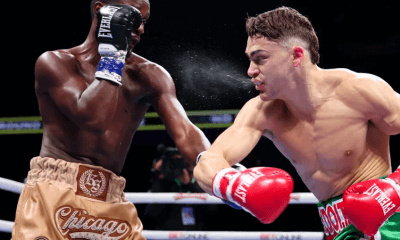
 Featured Articles3 weeks ago
Featured Articles3 weeks agoOscar Duarte and Regis Prograis Prevail on an Action-Packed Fight Card in Chicago
-
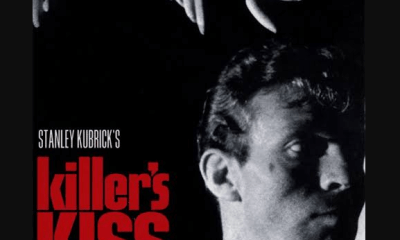
 Featured Articles2 weeks ago
Featured Articles2 weeks agoThe Hauser Report: Cinematic and Literary Notes
-
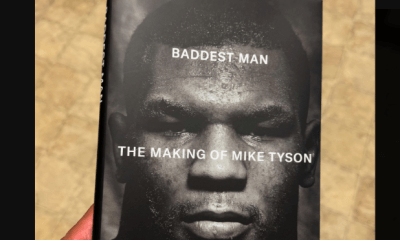
 Book Review2 weeks ago
Book Review2 weeks agoMark Kriegel’s New Book About Mike Tyson is a Must-Read
-

 Featured Articles4 weeks ago
Featured Articles4 weeks agoRemembering Dwight Muhammad Qawi (1953-2025) and his Triumphant Return to Prison
-
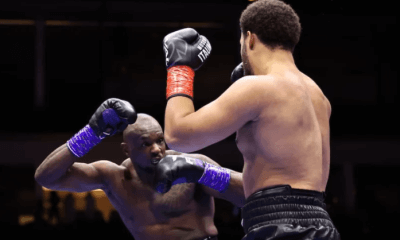
 Featured Articles7 days ago
Featured Articles7 days agoMoses Itauma Continues his Rapid Rise; Steamrolls Dillian Whyte in Riyadh
-
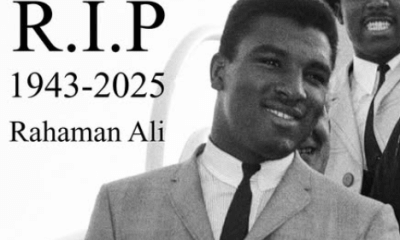
 Featured Articles3 weeks ago
Featured Articles3 weeks agoRahaman Ali (1943-2025)
-

 Featured Articles3 weeks ago
Featured Articles3 weeks agoTop Rank Boxing is in Limbo, but that Hasn’t Benched Robert Garcia’s Up-and-Comers






